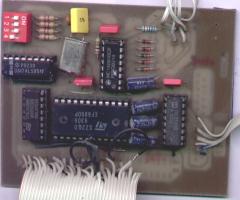Difference between revisions of "CPCI RS232 Interface"
| Line 1: | Line 1: | ||
[[Image:CPCAI-RS232interface.jpg|thumb|[[Octoate|Octoate's]] self-built version of the CPCI RS232 interface]] | [[Image:CPCAI-RS232interface.jpg|thumb|[[Octoate|Octoate's]] self-built version of the CPCI RS232 interface]] | ||
| − | This [[RS232]] interface was published as a DIY project in a special edition of the the German | + | This [[RS232]] interface was published as a DIY project in a special edition of the the German magazine: [[CPC Schneider International Sonderheft]] (#3-1986) and also in a later issue. |
| − | magazine: [[CPC Schneider International]] ( | + | |
A terminal program, written by [[The Cranium]], for this serial interface was published in the last issue of the [[CPC Schneider International]] (12/1 1992/1993). | A terminal program, written by [[The Cranium]], for this serial interface was published in the last issue of the [[CPC Schneider International]] (12/1 1992/1993). | ||
Revision as of 16:09, 11 August 2010

This RS232 interface was published as a DIY project in a special edition of the the German magazine: CPC Schneider International Sonderheft (#3-1986) and also in a later issue.
A terminal program, written by The Cranium, for this serial interface was published in the last issue of the CPC Schneider International (12/1 1992/1993).
As the standard CPC series does not include a RS232, this interface was very handy in order to communicate with other computers(eg. IBM PCs). A major drawback was the missing interrupt line which means that your programs have to poll the interface.
Technical specs
Contains a single 25pin DSUB connector, a MC6850 chip (ACIA), MAX 232 voltage converter, 74LS138 and 74LS85 address decoders, and a 4MHz oscillator with HEF 4060 clock divider, the clock divider connects to a mechanic switch, allowing to select between 19.2kHz and 38.4kHz. Four dip-switches allow to select the port addresses (FxDCh and FxDDh, with x=0..F, usually x=8).
F8DCh CPCI Serial Interface MC6850 Control/Status Register (R/W) F8DDh CPCI Serial Interface MC6850 Data Register (R/W)
How to build a RS232 interface (German)
- RS232



